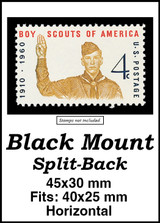
U.S. #E1
1885 10¢ Messenger Running
Special Delivery
Issue Date: October 1, 1885
City: Washington, DC
Printed By: Bureau of Engraving and Printing
Printing Method: Engraved
Perforations: 12
Color: Blue
Issued on October 1, 1885, US #E1 was the first stamp in a service that would forever change the US mail – Special Delivery.&... more
U.S. #E1
1885 10¢ Messenger Running
Special Delivery
Issue Date: October 1, 1885
City: Washington, DC
Printed By: Bureau of Engraving and Printing
Printing Method: Engraved
Perforations: 12
Color: Blue
Issued on October 1, 1885, US #E1 was the first stamp in a service that would forever change the US mail – Special Delivery. US #E1 has been called “one of the unpolished gems of the late 19th and 20th century postal service.”
Special Delivery Service Begins
On October 1, 1885, the Special Delivery service was first available and the first stamp, U.S. #E1, went on sale.
Assistant Postmaster General Frank Hatton first proposed the Special Delivery Service in 1883. At the time, the Postal Service delivered twice a day in major cities. Private companies were used for urgent business mail that couldn’t wait for those scheduled deliveries. Hatton believed the companies were cutting into the Postal Service’s profits. On March 3, 1885, Congress approved the Special Delivery Service Act.
The Special Delivery stamps are larger than postage stamps, so busy postal clerks could easily recognize them. The stamps were issued on October 1, 1885, and pictured a running messenger boy. Used in addition to the regular service required, this stamp paid for an extra service – the immediate delivery of a letter within one mile of any other Special Delivery post office.
Originally, Special Delivery offices were located only in cities with populations over 4,000. However, the venture was such a success, the service was extended to all areas in October 1886.
Because the first Special Delivery stamp bore the inscription “Secures immediate delivery at a special delivery office,” the stamp needed to be revised when this new act was put into effect. On September 6, 1888, a revised stamp bearing the inscription “Secures immediate delivery at any post office” was issued.
The trademark of these new Special Delivery stamps was the running post office messenger, who was often referred to as the “running speedy boy.” Interestingly, he is one of the few postal figures who was modeled after a living person. In order to get the proper running action, the engraver Charles Skinner used his young nephew, Frederick Pauling, as a model.
During one session, Mr. Skinner was so engrossed in his work he didn’t realize the length of time the boy was forced to stand on one foot. Eventually, young Frederick became completely exhausted and collapsed to the floor! In 1902, the design was changed to picture a young messenger riding a bicycle. Designer R. Ostrander Smith used himself as the model for this stamp.
In the days when few people owned phones and the invention of the Internet was in the distant future, sending a letter by Special Delivery was the best way to get an urgent message to someone in a short time. The last Special Delivery stamp was issued in 1971. By that time, the quality of service and the need for Special Delivery were in decline. Today, Priority Mail and Express Mail have taken the place of Special Delivery services.
Less
Most Orders Ship
within 1 Business Day
90 Day Return Policy
Satisfaction Guaranteed
Earn Reward Points
for FREE Stamps & More










